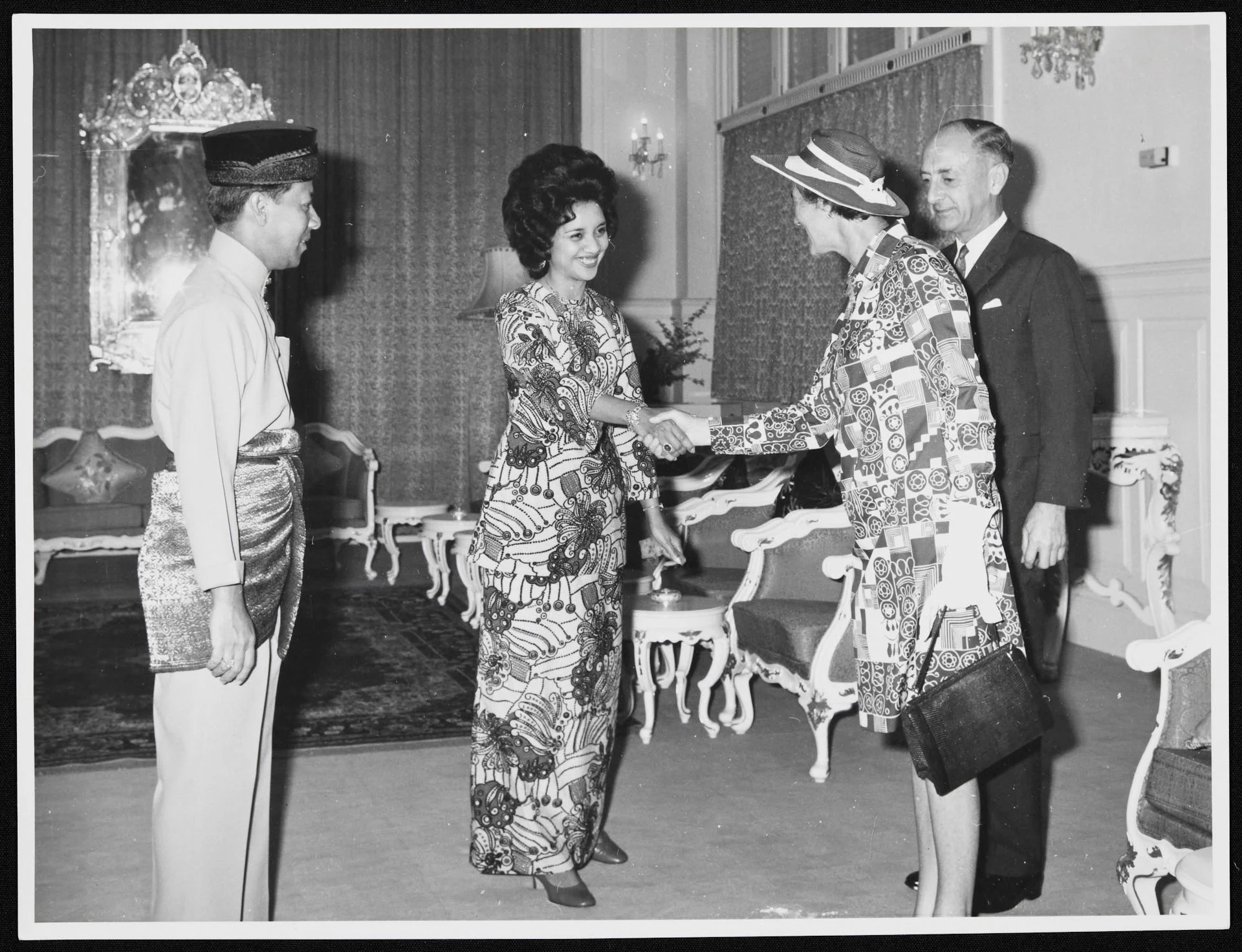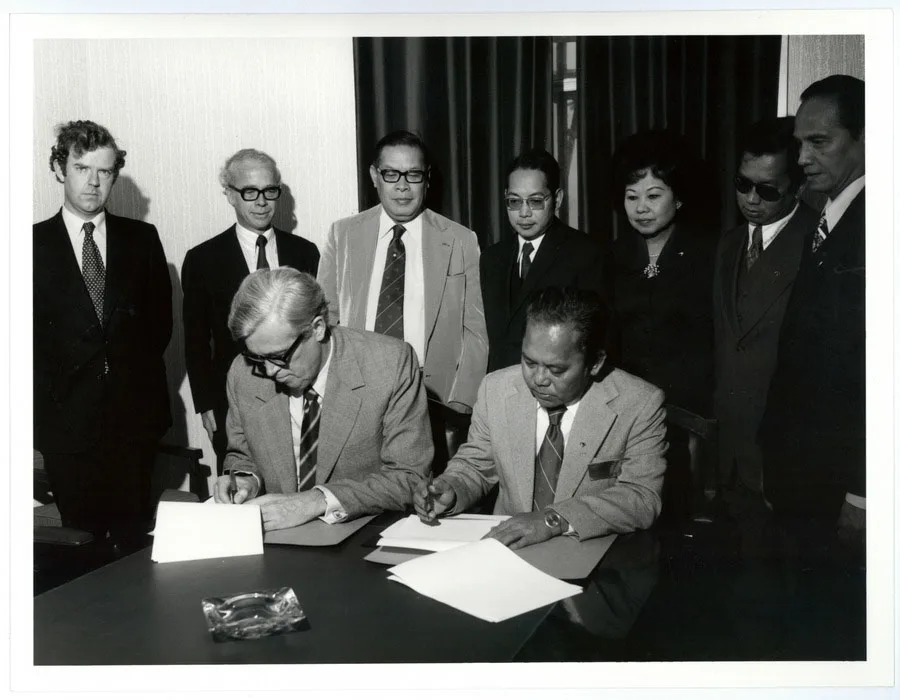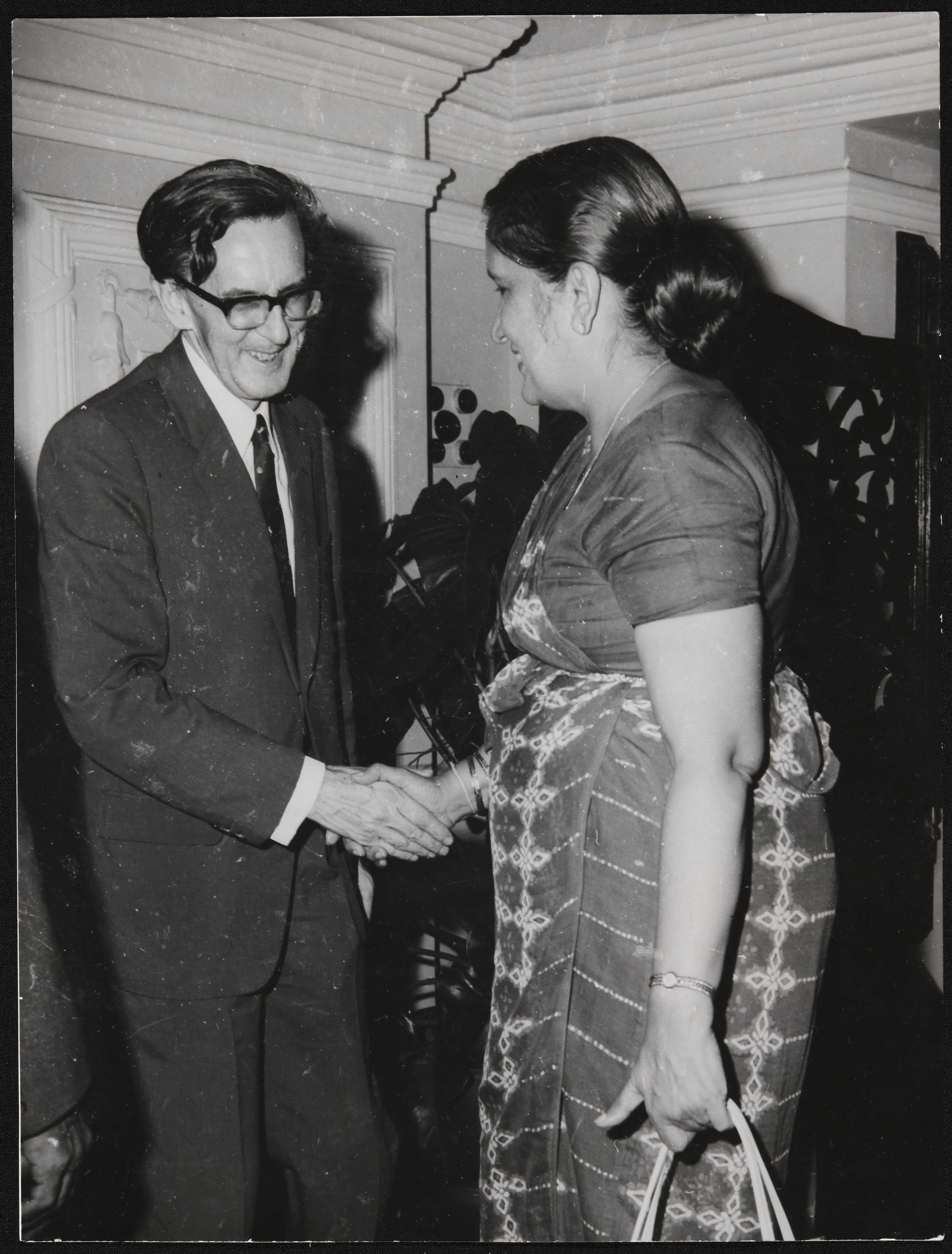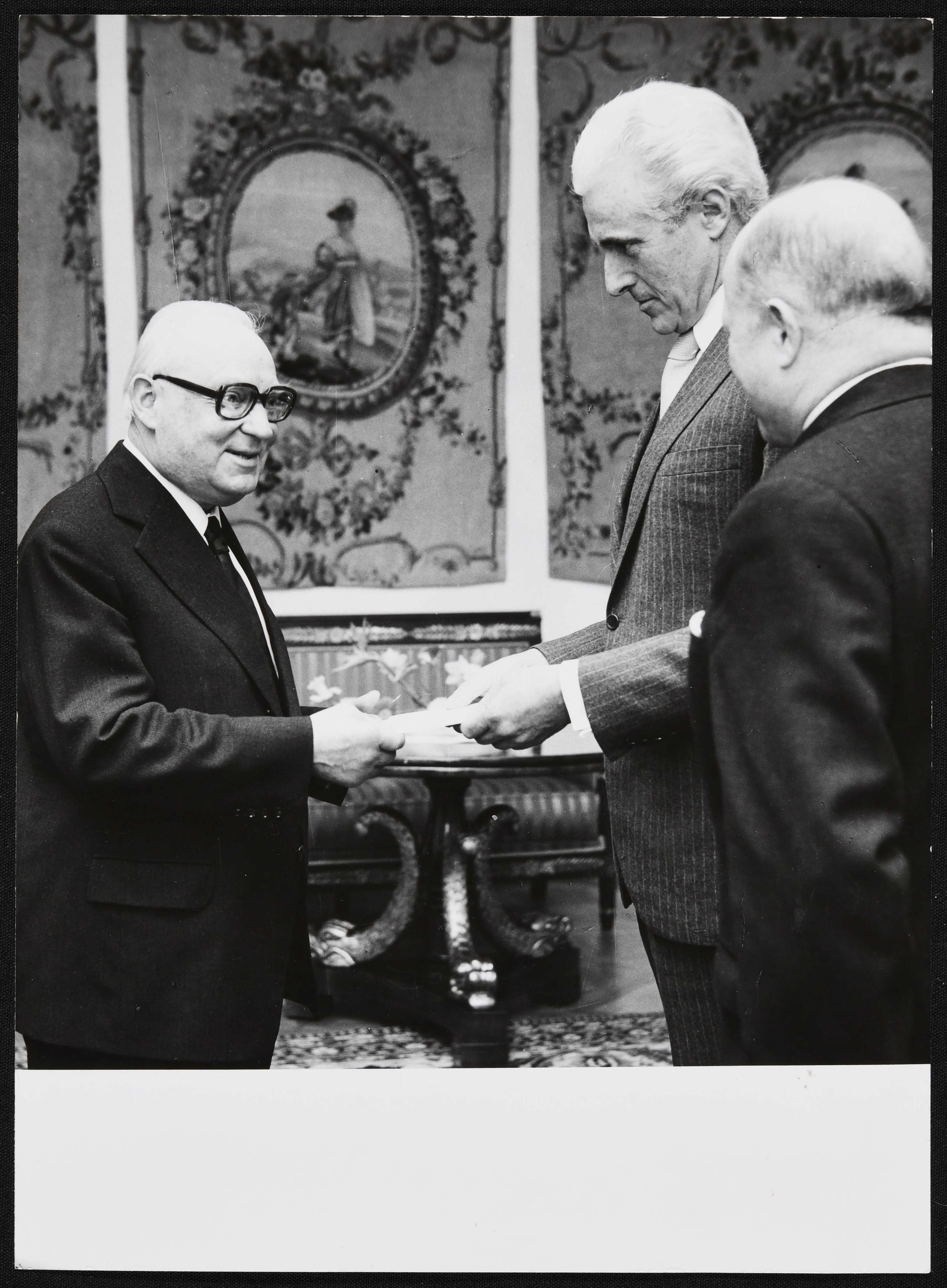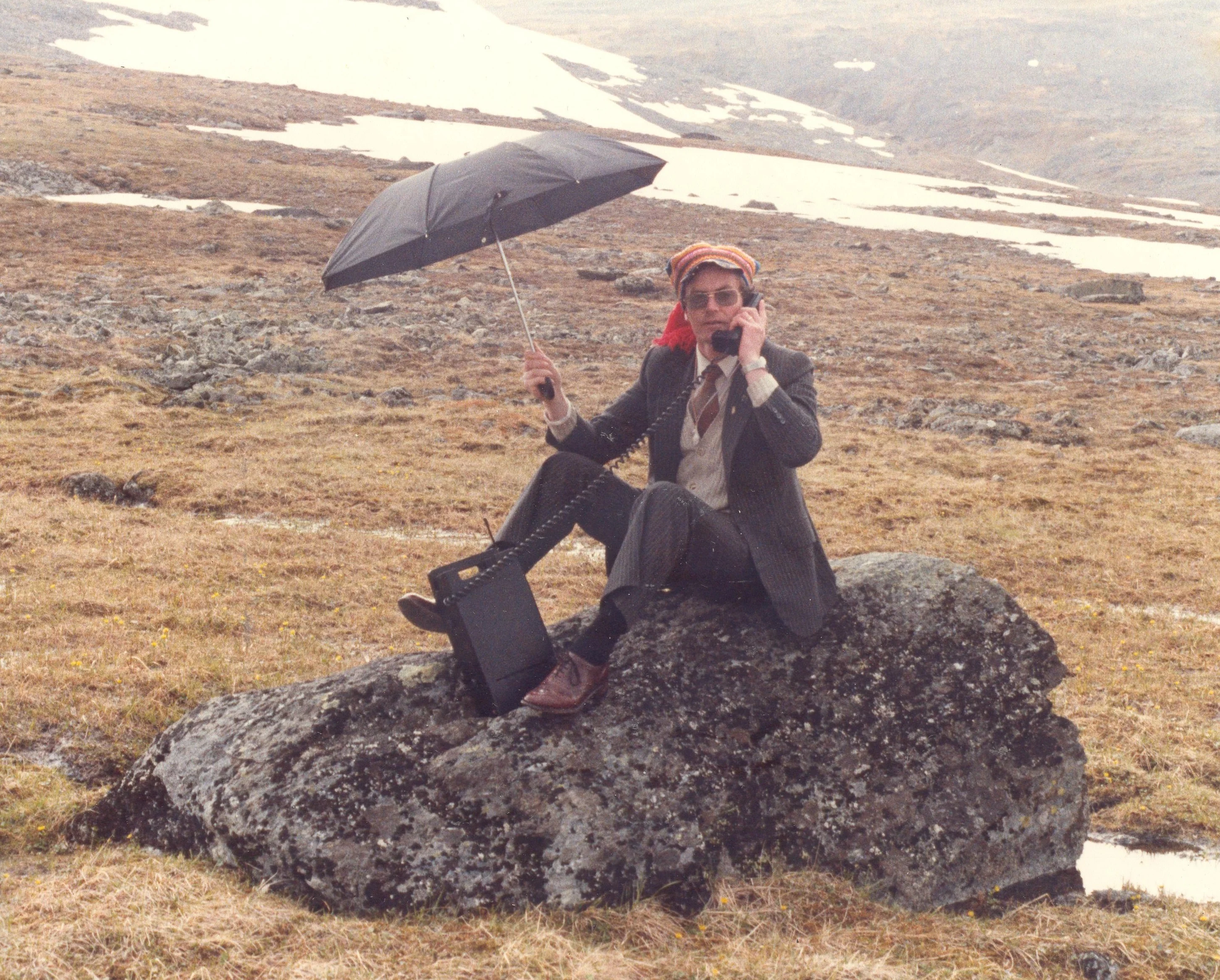Te whakatere haere i te hītori neke atu i te rautau te roa o ngā kaupapahere ki tāwāhi
Navigating over 100 years of foreign policy history
The Ministry of Foreign Affairs and Trade has released a guide about how to navigate historical records held here at Archives New Zealand. Find out more about this collection of records and how the guide came to be.
Ministry of Foreign Affairs and Trade historical records
Every day for over 100 years, diplomats and specialist staff have worked to advance New Zealand’s interests around the world. Whether working on aid, trade or foreign policy, their work has helped to chart New Zealand’s course through ever changing global waters.
In the course of this work our foreign affairs officials have created thousands of pieces of information. From policy analysis, photographs and accounts of historic events — they are a hugely valuable source for our understanding of New Zealand’s history.
Te Rua Mahara o te Kāwanatanga Archives New Zealand holds many of these physical records and for the first time, the Ministry of Foreign Affairs and Trade Te Manatū Aorere has launched a guide to help researchers navigate the records held here.
The records come in all shapes and sizes, and give an insight into the behind the scenes thinking, discussions and debates that have contributed to official positions across decades.
Valedictories for example, were the name given to a head of post’s final despatch and addressed to the Minister of Foreign Affairs. They summarise the bilateral relationship, include some irreverent or humorous parts, and are very thoughtfully written.
The guide will help researchers to navigate many quirks of the Ministry of Foreign Affairs and Trade’s information. A good example of this is the difference between telegrams written on blue, pink and yellow paper. Blue and pink mean the communication is sent from Wellington and yellow means it is sent to Wellington.
How the guide came about
The idea of the guide came about from author and veteran diplomat, Jim Howell, who has been with the Ministry since 1962. Jim has represented New Zealand in Saudi Arabia, United States, Malaysia, Peru and many other countries. He has extensive foreign policy experience and has led important Ministry-wide changes from Wellington.
Jim’s knowledge of how the Ministry has worked and recorded information for over 60 years is a real taonga. He notes that up until the year 2010, the bulk of the Ministry’s information was recorded on paper and had a range of physical filing structures.
This is a novelty to an increasing number of people who have come of age in our digital world.
During the first COVID-19 lockdown, Jim set out to record what he knows, so future generations can more easily navigate the Ministry’s historical records and research our diplomatic history.
About the guide
The guide includes an introduction to the Ministry’s records, how to find and use them and a glossary to decode the descriptions of different types — from diplomatic bags to confidential airmail bulletins and aid programme files.
It's designed to support use of the collections held here at Archives New Zealand. Use Collections search to locate files and engage with the historical collection.
The Ministry hopes the guide will help unlock its historical records and inform a deeper understanding of Aotearoa New Zealand’s place in the world.
Read the guide
'The Historical Records of the Ministry of Foreign Affairs and Trade – Manatū Aorere: a Reference Guide and Glossary for Authors, Historians and Researchers' is available for download from the Ministry of Foreign Affairs and Trade website. You can also read it in person at one of our reading rooms.
